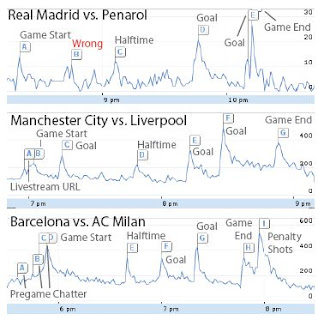- Title: Sensing cognitive multitasking for a brain-based adaptive user interface
- Reference Information:
- Erin Treacy Solovey, Francine Lalooses, Krysta Chauncey, Douglas Weaver, Margarita Parasi, Matthias Scheutz, Angelo Sassaroli, Sergio Fantini, Paul Schermerhorn, Audrey Girouard, and Robert J.K. Jacob. 2011. Sensing cognitive multitasking for a brain-based adaptive user interface. In <em>Proceedings of the 2011 annual conference on Human factors in computing systems</em> (CHI '11). ACM, New York, NY, USA, 383-392. DOI=10.1145/1978942.1978997 http://doi.acm.org/10.1145/1978942.1978997
- UIST 2010 New York, New York.
- Author Bios:
- Erin Treacy Solovey with Tufts University. Fifteen publications.
- Francine Lalooses with Tufts University. Two publications.
- Krysta Chauncey with Tufts University. Six publications.
- Douglas Weaber with Tufts University. Two publications.
- Margarita Parasi with Tufts University. First publication.
- Matthias Scheutz with Tufts University, Indiana University and the University of Notre Dame. Thirty seven publications.
- Angelo Sassaroli with Tufts University. Six publications.
- Sergio Fantini with Tufts University. Seven publications.
- Paul Schermerhorn with the University of Notre Dame and Indiana University. Twenty four publications.
- Audrey Girourd with Tufts University and Queen's University. Nineteen publications.
- Robert J.K. Jacob with Tufts University and MIT. Two publications.Seventy five publications, and 1,004 citations.
- Summary
- Hypothesis:
- An fNIRS tool will be able to capture the tasking state of a human mind as effectively as required by an HCI application standing, around the same level as an fMRI machine. Researchers also hypothesized that a system can be designed to capture this tasking state and facilitate it by aiding the user in their tasks.
- Methods
- The first hypothesis was tested by seeing how accurately an fNIRS machine could classify a user when they were in various tasking states (branching, dual or delay). They simply asked users to perform a variety of tasks and analyzed how frequently their system was correctly classifying the current state. The second test involved participants instructed to perform various activities with a robot, and they analyzed how their system facilitated this interaction.
- Results
- The fNIRS machine showed some recognition between various states, above 50%, but was not extremely accurate. The researchers noted that this was a small group of testers and that other various improvements could be made to improve this accuracy. Building off this the researchers built a tool that attempted to facilitate these changing states.
- Contents
- The researchers noticed that the fNIRS machine is not as effective at collecting data as the fMIR machine is, but it is much more practical in a real world environment. Researchers built a proof of concept system that showed promise.
- Discussion
- These researchers proposed an interesting system and were effective at providing proof for the second hypothesis (the first one still needs to be analyzed some more). I like this idea because I am constantly attempting to multitask and the little tasks that can easily be automated are the ones that take up the most time (switching contexts etc.). If this is effectively implemented, then the work place should increase in productivity by a significant amount.
Picture Source: "Sensing cognitive multitasking for a brain-based adaptive user interface"






